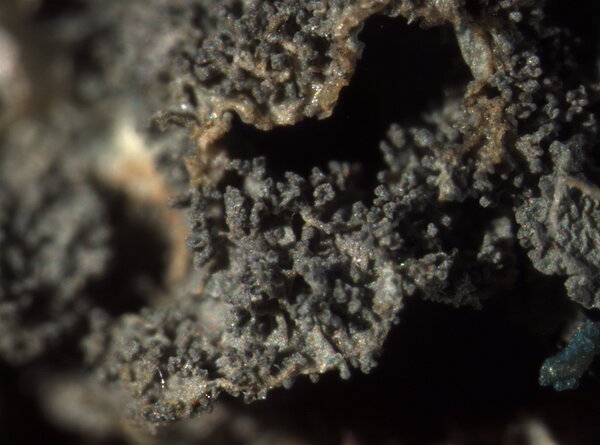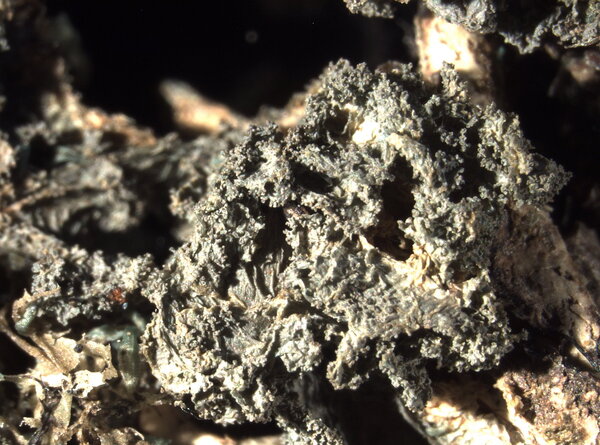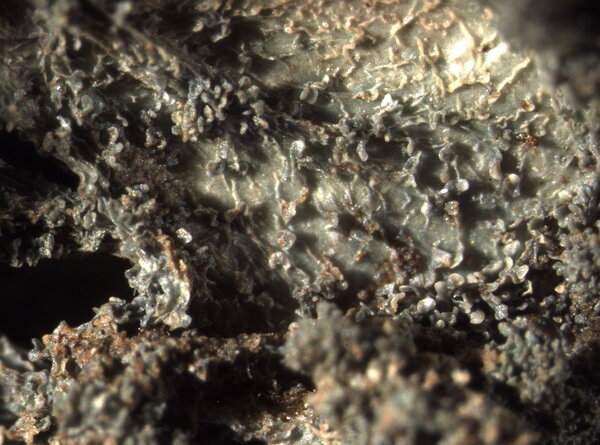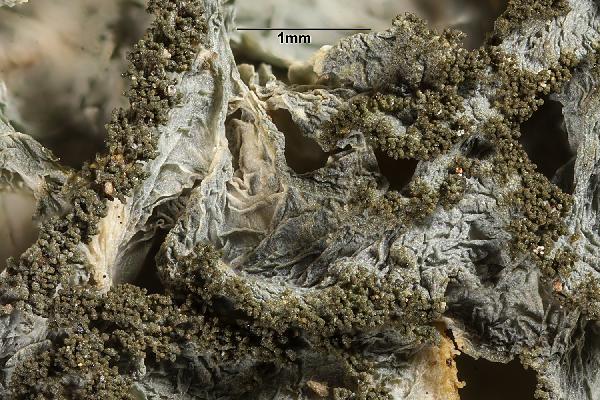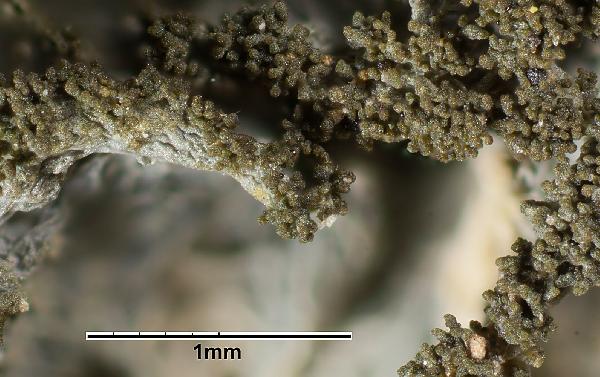Leptogium coralloideum (Meyen & Flot.) Vain.
Suom. Tied. Toim., ser. A, 6, 7: 110, 1915. Basionym: Leptogium diaphanum var. coralloideum Meyen & Flot. - Nova Acta Acad. Caesar. Leop. Carol., 19 (suppl.): 226, 1843.
Synonyms: Leptogium corrugatomontuosum Couderc
Distribution: N - Lig (Gyelnik Lichenoth. Parva 25: Jørgensen 1994). C - Tosc (Jørgensen 1994), Abr (Jørgensen 1994, Caporale & al. 2016). S - Bas (Jørgensen 1994).
Description: Thallus foliose, gelatinous when wet, loosely attached, isidiate, pale grey to lead-grey, 2-8 cm wide. Lobes irregular, 2-5 mm wide, 200-300 µm thick, markedly wrinkled and radially ridged, with concolorous or slightly darker, scattered to dense, cylindrical to coralloid, up to 1 mm tall isidia mainly developing along the ridges; lower surface paler, with scattered tufts of white hairs, but without a well-developed tomentum. Upper and lower cortices composed of a single layer of angular cells , inner part of thallus with loosely interwoven chains of Nostoc and hyphae. Apothecia rare, lecanorine, substipitate, 3-8 mm across, with an orange-brown to cream-colored, concave to slightly convex disc, and a wrinkled, usually isidiate thalline margin. Proper exciple euparaplectenchymatous; epithecium yellowish to pale brown; hymenium colourless, 90-135 µm high; paraphyses mostly simple, 1-2 µm thick at mid-level, the apical cells slightly swollen; hypothecium yellowish to pale brown, 35-70 µm high, with a paraplectenchyma directly below subhymenium. Asci 8-spored, cylindrical-clavate, the apex strongly thickened, the apical dome K/I+ pale blue, with a downwardly projecting K/I+ deep blue tubular structure. Ascospores muriform, with 3-5 transverse septa and 1-2 longitudinal septa, hyaline, ellipsoid to subfusiform, (25-)30-40 x 10-18 µm. Photobiont cyanobacterial (Nostoc, the cells in long chains). Spot tests: all negative. Chemistry: without lichen substances.Note: a Mediterranean-Atlantic species found on bark of broad-leaved trees, mostly Tyrrhenian in Italy.
Growth form: Foliose, broad lobed
Substrata: bark
Photobiont: cyanobacteria, filamentous (e.g. Nostoc, Scytonema)
Reproductive strategy: mainly asexual, by isidia, or isidia-like structures (e.g. schizidia)
Most common in areas with a humid-warm climate (e.g. most of Tyrrenian Italy)
Commonnes-rarity: (info)
Alpine belt: absent
Subalpine belt: absent
Oromediterranean belt: absent
Montane belt: absent
Submediterranean belt: extremely rare
Padanian area: absent
Humid submediterranean belt: very rare
Humid mediterranean belt: rare
Dry mediterranean belt: absent
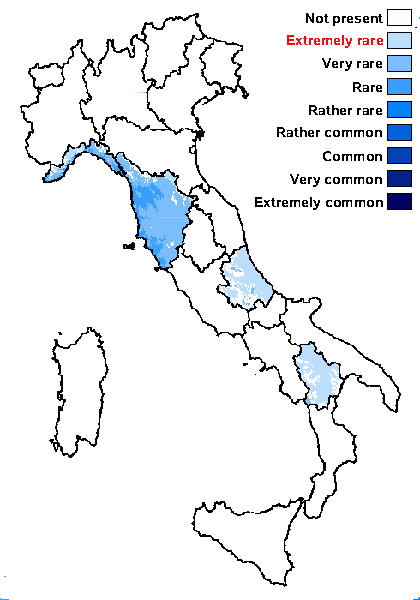
Predictive model
Herbarium samples
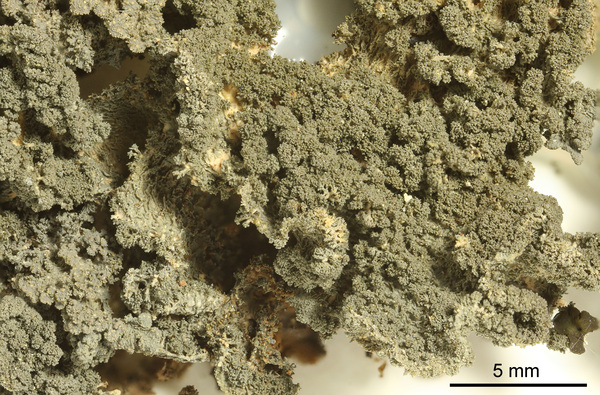

Felix Schumm - CC BY-SA 4.0
[19061], Australia, New South Wales, Marble Arch, Deua National Park, 18 km S-SW of Majors Creek, 35°44' S, 149°42' E, 650 m, on branches of Bursaria spinosa. Leg. H. Streimann (38810A), 20.09.1987, det. D. Verdon. LICH. AUSTRALASICI EXS. 158.
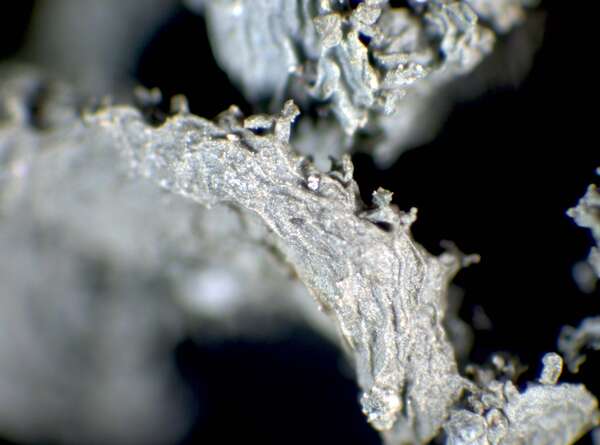

P.L. Nimis; Owner: Department of Life Sciences, University of Trieste
Herbarium: TSB (13754)
2001/12/07
detail of upper surface with isidia
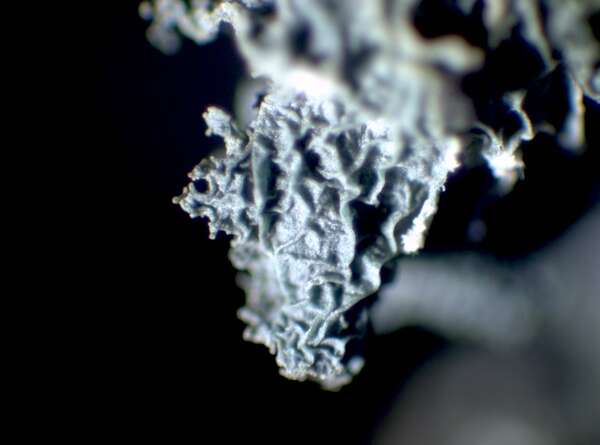

P.L. Nimis; Owner: Department of Life Sciences, University of Trieste
Herbarium: TSB (30004)
2001/12/07
detail of lobe tip
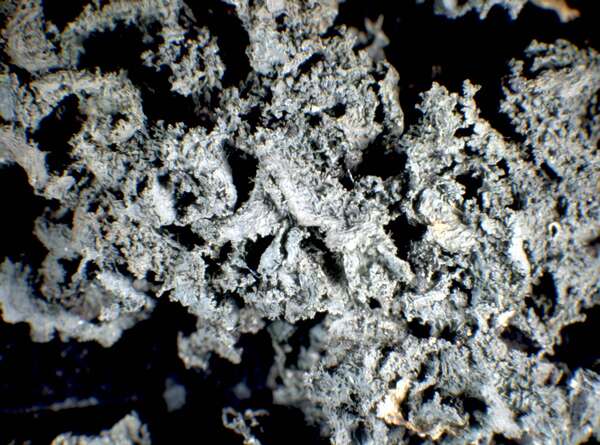

P.L. Nimis; Owner: Department of Life Sciences, University of Trieste
Herbarium: TSB (13754)
2001/12/07
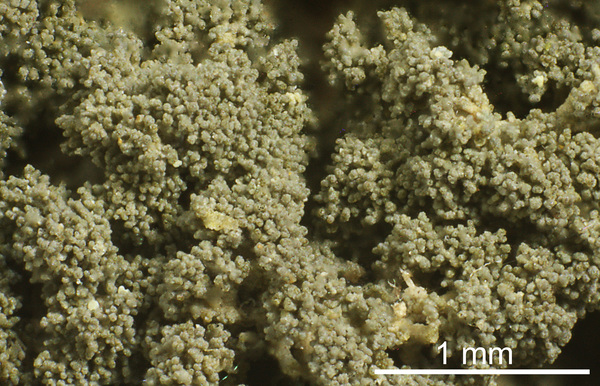

Felix Schumm - CC BY-SA 4.0
[19061], Australia, New South Wales, Marble Arch, Deua National Park, 18 km S-SW of Majors Creek, 35°44' S, 149°42' E, 650 m, on branches of Bursaria spinosa. Leg. H. Streimann (38810A), 20.09.1987, det. D. Verdon. LICH. AUSTRALASICI EXS. 158.


Felix Schumm - CC BY-SA 3.0
[ABL42850], Brazil, Alagoas, Quebrangulo, Pedra Talhada private
area. In Atlantic rain forest on tree bark. 9°15’ S, 36°25’35’’ W, 500-700
m. Leg. M. Cáceres & A. Aptroot (no 42850), 21-23.10.2017. Det. A.
Aptroot, 2017.
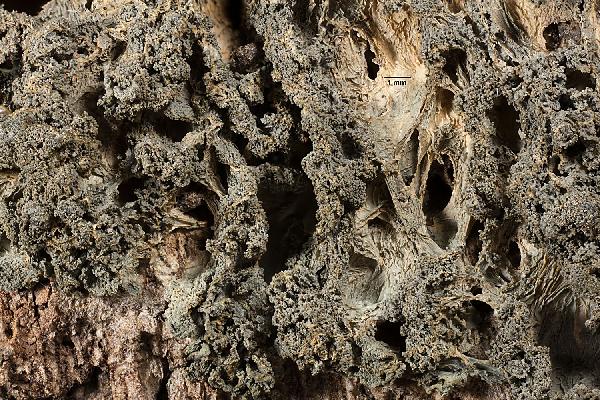
Ulrich Kirschbaum CC BY-SA 4.0 - Source: https://www.thm.de/lse/ulrich-kirschbaum/flechtenbilder
Portugal: Madeira.
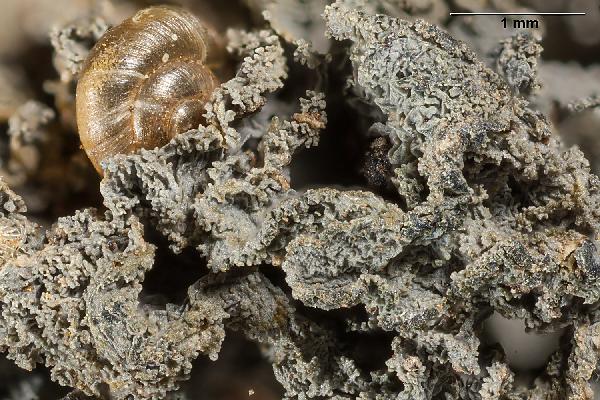
Ulrich Kirschbaum CC BY-SA 4.0 - Source: https://www.thm.de/lse/ulrich-kirschbaum/flechtenbilder
Portugal: Madeira.
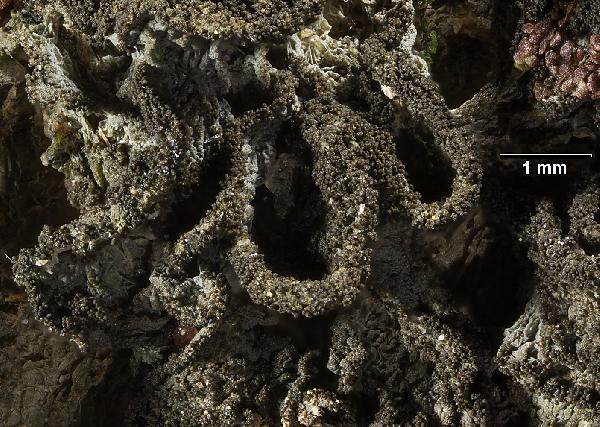
Ulrich Kirschbaum CC BY-SA 4.0 - Source: https://www.thm.de/lse/ulrich-kirschbaum/flechtenbilder
Portugal: Madeira.
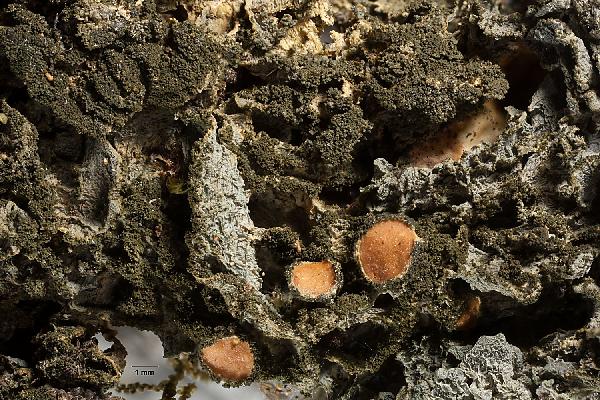
Ulrich Kirschbaum CC BY-SA 4.0 - Source: https://www.thm.de/lse/ulrich-kirschbaum/flechtenbilder
Portugal: Madeira.
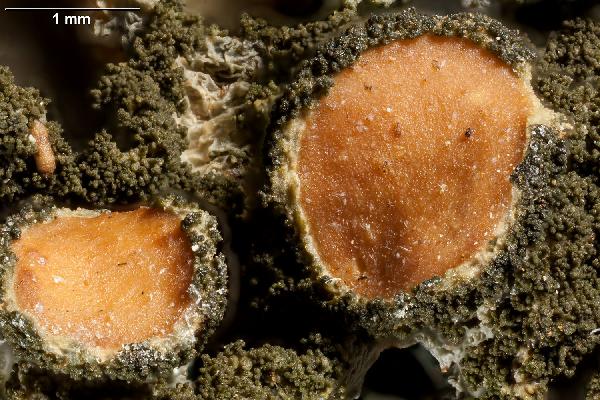
Ulrich Kirschbaum CC BY-SA 4.0 - Source: https://www.thm.de/lse/ulrich-kirschbaum/flechtenbilder
Portugal: Madeira.
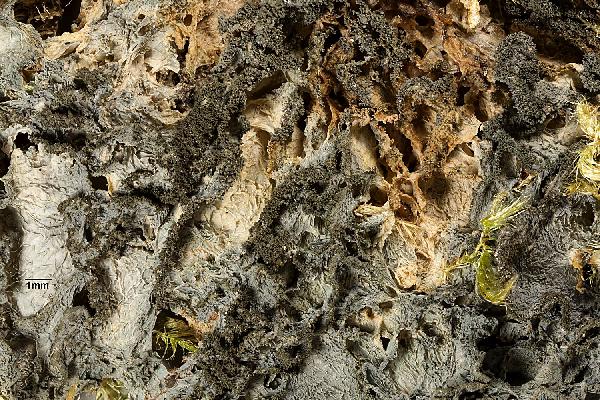
Ulrich Kirschbaum CC BY-SA 4.0 - Source: https://www.thm.de/lse/ulrich-kirschbaum/flechtenbilder
Portugal; n Lagos: Serra de Monchique.
Growth form: Foliose, broad lobed
Substrata: bark
Photobiont: cyanobacteria, filamentous (e.g. Nostoc, Scytonema)
Reproductive strategy: mainly asexual, by isidia, or isidia-like structures (e.g. schizidia)
Most common in areas with a humid-warm climate (e.g. most of Tyrrenian Italy)
Commonnes-rarity: (info)
Alpine belt: absent
Subalpine belt: absent
Oromediterranean belt: absent
Montane belt: absent
Submediterranean belt: extremely rare
Padanian area: absent
Humid submediterranean belt: very rare
Humid mediterranean belt: rare
Dry mediterranean belt: absent

Predictive model
| Herbarium samples |


Felix Schumm - CC BY-SA 4.0
[19061], Australia, New South Wales, Marble Arch, Deua National Park, 18 km S-SW of Majors Creek, 35°44' S, 149°42' E, 650 m, on branches of Bursaria spinosa. Leg. H. Streimann (38810A), 20.09.1987, det. D. Verdon. LICH. AUSTRALASICI EXS. 158.


P.L. Nimis; Owner: Department of Life Sciences, University of Trieste
Herbarium: TSB (13754)
2001/12/07
detail of upper surface with isidia


P.L. Nimis; Owner: Department of Life Sciences, University of Trieste
Herbarium: TSB (30004)
2001/12/07
detail of lobe tip


P.L. Nimis; Owner: Department of Life Sciences, University of Trieste
Herbarium: TSB (13754)
2001/12/07


Felix Schumm - CC BY-SA 4.0
[19061], Australia, New South Wales, Marble Arch, Deua National Park, 18 km S-SW of Majors Creek, 35°44' S, 149°42' E, 650 m, on branches of Bursaria spinosa. Leg. H. Streimann (38810A), 20.09.1987, det. D. Verdon. LICH. AUSTRALASICI EXS. 158.


Felix Schumm - CC BY-SA 3.0
[ABL42850], Brazil, Alagoas, Quebrangulo, Pedra Talhada private area. In Atlantic rain forest on tree bark. 9°15’ S, 36°25’35’’ W, 500-700 m. Leg. M. Cáceres & A. Aptroot (no 42850), 21-23.10.2017. Det. A. Aptroot, 2017.

Ulrich Kirschbaum CC BY-SA 4.0 - Source: https://www.thm.de/lse/ulrich-kirschbaum/flechtenbilder
Portugal: Madeira.

Ulrich Kirschbaum CC BY-SA 4.0 - Source: https://www.thm.de/lse/ulrich-kirschbaum/flechtenbilder
Portugal: Madeira.

Ulrich Kirschbaum CC BY-SA 4.0 - Source: https://www.thm.de/lse/ulrich-kirschbaum/flechtenbilder
Portugal: Madeira.

Ulrich Kirschbaum CC BY-SA 4.0 - Source: https://www.thm.de/lse/ulrich-kirschbaum/flechtenbilder
Portugal: Madeira.

Ulrich Kirschbaum CC BY-SA 4.0 - Source: https://www.thm.de/lse/ulrich-kirschbaum/flechtenbilder
Portugal: Madeira.

 Index Fungorum
Index Fungorum
 GBIF
GBIF
